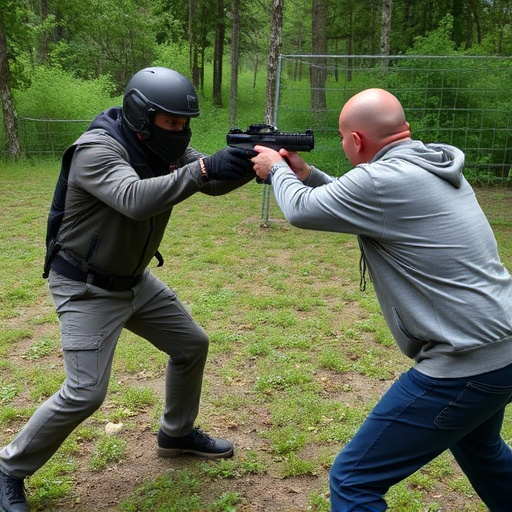Choosing non-lethal self-defense weapons for seniors involves considering battery type (cost vs. rechargeable), voltage & ampere requirements to balance effectiveness and safety, lifespan (200-300 charge cycles ideal), weight & size (compact, easy-to-carry designs favored).
Rechargeable stun gun batteries are a game-changer for those seeking non-lethal self-defense options, especially for seniors. This comprehensive guide delves into the crucial aspects of choosing the right battery for your safety. We explore various battery types, emphasizing the importance of voltage and ampere ratings for optimal performance and safety. Additionally, we discuss charge cycles, lifespan, weight, and size, providing insights to help users make informed decisions when selecting a reliable and usable stun gun for personal protection.
- Understanding Battery Types in Stun Guns
- Voltage and Ampere Requirements for Safety
- Charge Cycles and Lifespan Considerations
- Weight and Size Impact on Usability
Understanding Battery Types in Stun Guns
Choosing the right battery type is a crucial aspect of selecting a reliable and effective non-lethal self-defense weapon, such as a stun gun. Stun guns primarily use two types of batteries: alkaline and lithium-ion. Alkaline batteries, often found in AAA or 9V formats, are disposable and offer a cost-effective solution. They provide consistent power but may require frequent replacements, making them less convenient for regular users.
Lithium-ion batteries, on the other hand, are rechargeable and known for their high energy density. These batteries are lightweight and can store more energy than their alkaline counterparts, making them popular among stun gun owners. Rechargeable options are ideal for seniors or anyone looking to reduce battery waste. Many modern stun guns come with customizable charging options, ensuring users get the most out of their non-lethal self-defense weapons.
Voltage and Ampere Requirements for Safety
When considering a rechargeable stun gun, understanding voltage and ampere requirements is essential for ensuring safety, especially for seniors looking into non-lethal self-defense weapons. These parameters dictate the electrical power delivered by the device, directly influencing its effectiveness and potential side effects. A typical safe operating range for stun guns typically falls between 12V to 15V in voltage, with current outputs ranging from 3A to 8A.
Voltage and ampere specifications should be carefully reviewed before purchase, as they impact not just the stun gun’s performance but also its potential risks. For seniors, a device with lower voltage and current settings might be preferable to minimize shock severity while still providing enough power for effective self-defense in case of an emergency.
Charge Cycles and Lifespan Considerations
The longevity of a stun gun battery is a key factor in its overall performance, especially for non-lethal self-defense weapons designed for seniors. Charge cycles refer to the number of times a battery can be fully discharged and recharged before its capacity diminishes. Typically, high-quality stun guns offer between 200 to 300 charge cycles over their lifespan. This translates to several years of reliable use if charged and stored properly.
When considering a stun gun for personal safety, it’s crucial to understand that the battery’s lifespan isn’t just about how many times you can use it before needing a replacement. Proper care and storage practices significantly impact its longevity. Extreme temperatures, overcharging, and frequent partial discharges can all contribute to faster degradation. Seniors looking into non-lethal self-defense options should opt for stun guns with longer battery lifespans, ensuring peace of mind and reliable protection.
Weight and Size Impact on Usability
When it comes to non-lethal self-defense weapons for seniors, weight and size play a significant role in usability. Smaller and lighter stun guns are generally more preferred as they offer greater ease of carry and deployment. Seniors might face physical limitations that make handling heavier devices challenging. A compact design allows them to keep the device readily accessible without causing strain or discomfort during use.
Moreover, smaller batteries in these non-lethal self-defense tools can be advantageous. Rechargeable batteries with manageable sizes ensure regular usage without the burden of constant replacements. This feature aligns perfectly with the needs of seniors who seek a reliable and convenient option for personal safety.
When choosing a rechargeable stun gun, understanding its battery specifications is paramount. The right battery type, voltage, and charge cycles ensure optimal safety and usability for non-lethal self-defense weapons, particularly for seniors seeking personal protection. By considering these factors, users can select a stun gun that offers both reliability and ease of use, providing peace of mind in their personal safety journey.
